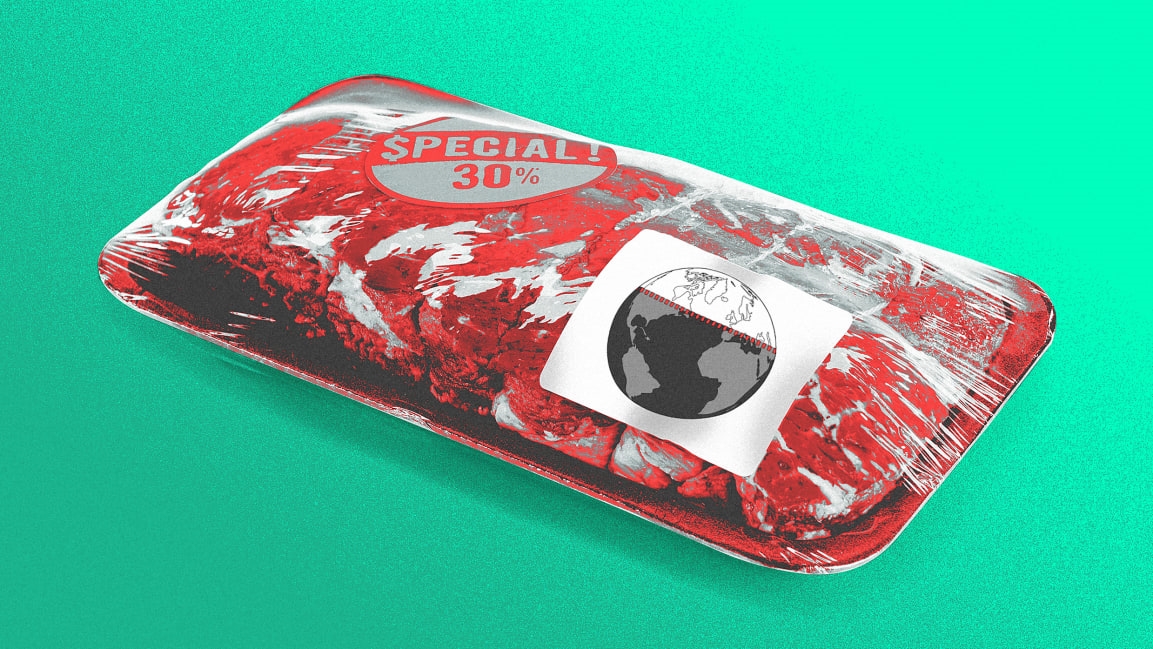Here’s one way we can get people to choose more climate-friendly foods
In a study recently published in the journal Food Policy, researchers at the University of Copenhagen and Swedish University of Agricultural Sciences looked at how carbon labels on food influenced consumer choice, and whether or not consumers even wanted to know the carbon footprint of their food.
First, they asked more than 800 Swedish participants to choose between different products, including beef, a mixture of beef and beans, chicken, or a meat substitute—none of which had labels about their environmental impact. Then, the participants were asked if they wanted to know the climate impact of those items; one in three responders said no. These “information avoiders” are emblematic of a common human behavior that scientists call “active information avoidance.” Many of us would rather not know, for example, how many calories are in the bag of chips we just finished. Or, in this case, how your favorite hamburger might be poisoning the planet.
“Our food consumption has a fairly large CO2 footprint, so it is an interesting and important product to study,” says Jonas Nordström, an associate professor at the University of Copenhagen who coauthored the study. Food production accounts for a quarter of global greenhouse gas emissions, and despite the trend toward eating local, what you eat matters more than where it came from. Unfortunately, for many consumers, ignorance is bliss.
But what Nordström and his two coauthors discovered may be cause for optimism. Although a third of study participants said they didn’t want to know more about their food, the researchers gave them that information anyway. “We recognize that this approach may annoy participants who were provided information against their will,” they write. Whether or not they were annoyed, however, the “information avoiders” still reduced their carbon footprint by a collective 12% after viewing climate labels, primarily by swapping their choice of beef for chicken.
Participants who actually wanted to know the climate impact of their food changed their decisions to an even greater degree. Those who said “yes” to seeing the climate labels collectively reduced their carbon footprint by 32% by making new food choices, such as picking pork, chicken, or the meat substitute over beef or the combination of beef and beans.
That’s good news for the planet as carbon labels become more mainstream. Meat substitute company Quorn currently includes the carbon footprint of its products right on their packaging, and Chipotle and Just Salad have made similar information available to customers. In Denmark, a supermarket chain called Coop has an app that tells shoppers the total carbon footprint of their shopping trip, and Danish officials want all grocery stores to start putting carbon footprint stickers on their products. In Sweden, a food brand called Felix launched a grocery store where all the items are priced based on their carbon impact.
For now, of course, carbon labels aren’t mandatory—and the products that have the biggest carbon footprints aren’t likely to cough up that information on their own. Either governments need to take a more active role in requiring such labels, or social norms will need to evolve to the point that consumer pressure forces companies to provide them. Luckily, as Nordström discovered, even consumers who are annoyed by the practice seem likely to change their ways, at least a little—once they’re forced to see that information. Maybe, in the future, a food product’s carbon footprint will be as obvious as its price.
(23)



